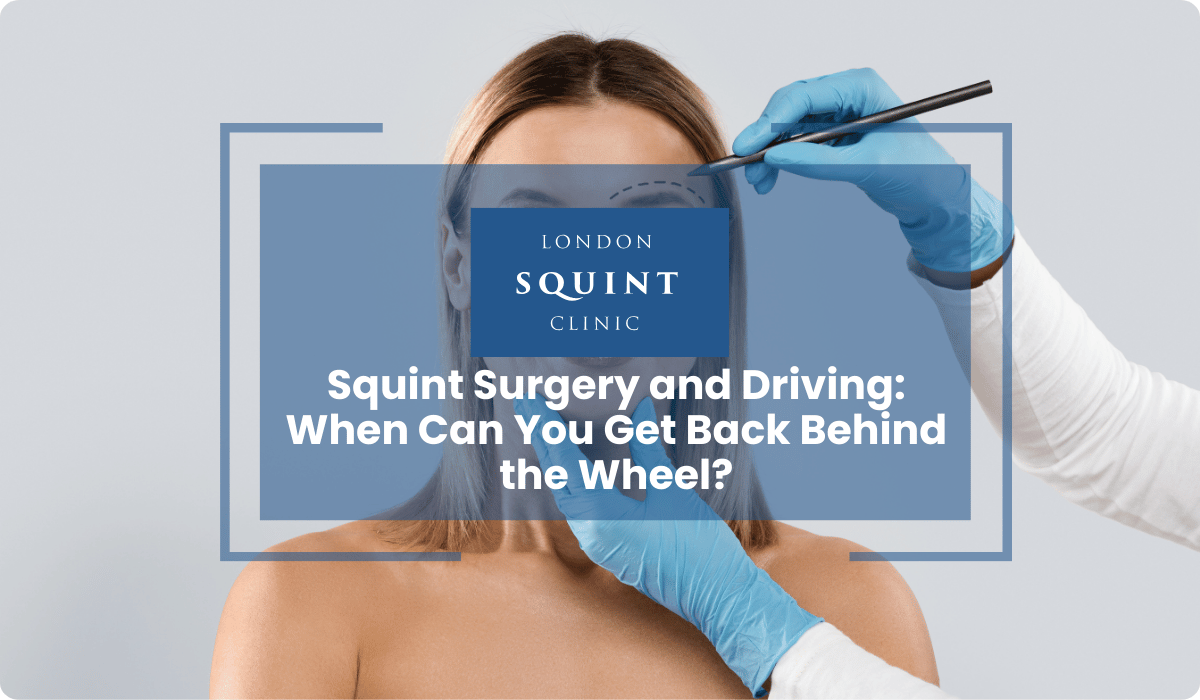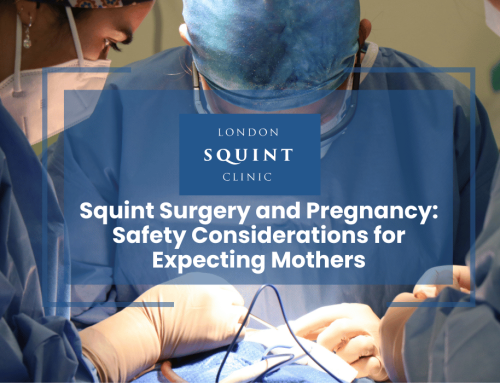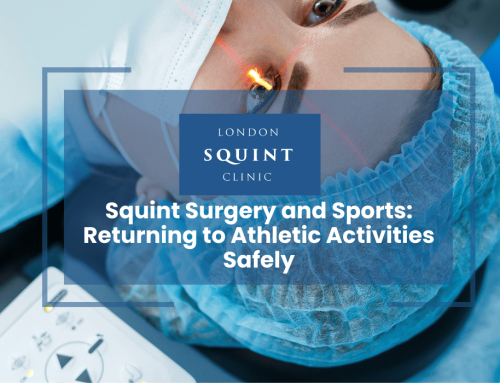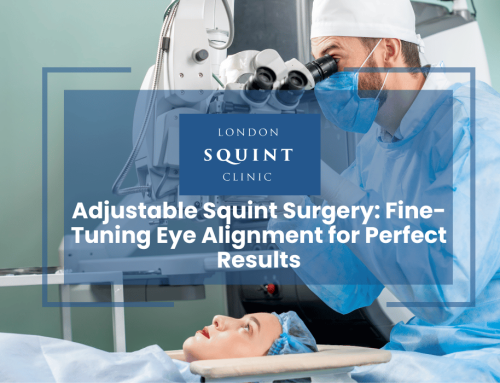Squint Surgery and Driving: When Can You Get Back Behind the Wheel?
Essential Guidance for Drivers After Squint Surgery
- Most patients can resume driving 1-6 weeks after squint surgery, depending on individual recovery and visual stability.
- You must meet DVLA vision standards before returning to driving, including adequate visual acuity and no disabling double vision.
- Consult your squint surgeon at your post-operative appointment for personalized advice on driving readiness.
- Start with short, familiar journeys during daylight hours and gradually increase driving complexity as your vision stabilizes.
- Persistent double vision that affects driving safety must be reported to the DVLA and may require management strategies before driving can resume.
- Driving with known visual impairment could invalidate your insurance and have legal consequences if an accident occurs.
Table of Contents
- Understanding Squint Surgery and Its Impact on Vision
- The Recovery Timeline: What to Expect After Squint Surgery
- DVLA Requirements for Driving After Eye Surgery
- When Can I Safely Return to Driving After Squint Surgery?
- Managing Double Vision and Other Visual Challenges
- Practical Tips for Your First Drives Post-Surgery
- Legal Considerations and Insurance Implications
- Consulting Your Squint Surgeon About Driving Readiness
Understanding Squint Surgery and Its Impact on Vision
Squint surgery (strabismus surgery) is a procedure designed to realign the eyes by adjusting the tension of the eye muscles. This corrective surgery aims to improve both the cosmetic appearance of the eyes and, importantly for drivers, visual function. The procedure involves either strengthening or weakening specific eye muscles to achieve proper alignment.
During the immediate post-operative period, your vision will be temporarily affected. This is entirely normal and expected. The visual system needs time to adapt to the new eye alignment, which can result in temporary double vision (diplopia), blurred vision, or altered depth perception—all critical factors for safe driving.
The extent of these visual changes varies significantly between patients. Some individuals experience minimal visual disturbance and recover quickly, while others may require several weeks for their brain to adapt to the new visual input. This adaptation period is crucial, as your brain needs to relearn how to process visual information from both eyes working together in their new alignment.
For drivers, these temporary visual changes present important safety considerations. Activities requiring precise visual judgement—such as gauging distances between vehicles, reading road signs, or reacting to sudden hazards—may be compromised during the recovery period. Understanding these potential impacts is essential for making informed decisions about when to resume driving after your squint surgery.
The Recovery Timeline: What to Expect After Squint Surgery
The recovery journey after squint surgery follows a relatively predictable pattern, though individual experiences may vary. Understanding this timeline can help you plan appropriately for your return to driving.
First 24-48 hours: Immediately after surgery, your vision will be significantly affected. You may experience double vision, blurred vision, light sensitivity, and discomfort. During this period, driving is absolutely contraindicated. Most patients take prescribed pain medication which further prohibits driving.
Days 3-7: Initial discomfort typically subsides, but visual disturbances often persist. Your eyes may appear red, and you might experience grittiness or a foreign body sensation. Vision may fluctuate throughout the day, with double vision potentially coming and going. Driving remains unsafe during this period for most patients.
Weeks 1-2: Significant improvement usually occurs during this timeframe. Redness and discomfort diminish considerably. Visual stability improves, though some patients still experience intermittent double vision or visual fatigue. Recovery from squint surgery varies between individuals, with some patients feeling ready to drive by the end of this period, while others require more time.
Weeks 3-6: Most patients experience substantial visual improvement by this stage. Eye alignment stabilises, and the brain adapts to the new visual input. Double vision, if still present, is typically less frequent and less severe. Many patients receive clearance to drive during this period, subject to meeting visual standards.
Beyond 6 weeks: The vast majority of patients achieve stable vision and can safely resume all normal activities, including driving. Any persistent visual issues should be discussed with your squint surgeon, as they may indicate the need for further assessment or treatment.
DVLA Requirements for Driving After Eye Surgery
The Driver and Vehicle Licensing Agency (DVLA) in the UK has established clear vision standards that all drivers must meet, regardless of whether they’ve undergone eye surgery. Understanding these requirements is essential for anyone recovering from squint surgery.
For standard car and motorcycle licences (Group 1), the key visual requirements include:
- Visual acuity of at least 0.5 decimal (6/12 Snellen) when using both eyes together, with or without corrective lenses
- An adequate field of vision (120 degrees horizontally with no significant defect within the central 20 degrees)
- No diplopia (double vision) that cannot be controlled
For commercial drivers (Group 2 – lorries and buses), the standards are more stringent:
- Visual acuity of at least 0.8 decimal (6/7.5 Snellen) in the better eye and at least 0.1 decimal (6/60 Snellen) in the other eye
- A wider field of vision requirement
- No history of significant diplopia
Importantly, the DVLA requires that you notify them if you develop any medical condition that could affect your driving, including persistent double vision. However, temporary visual disturbances following planned surgery typically don’t require notification unless they persist beyond the expected recovery period.
The responsibility for determining fitness to drive ultimately rests with the individual driver. If you’re unsure whether your vision meets the required standards after squint surgery, you should consult your ophthalmologist for a formal assessment before resuming driving.
When Can I Safely Return to Driving After Squint Surgery?
The timing for safely returning to driving after squint surgery varies considerably between individuals. While some patients may be ready to drive within 1-2 weeks, others might need 4-6 weeks or longer. Several key factors influence this timeline:
Type and complexity of squint surgery: More complex procedures involving multiple muscles or adjustable sutures typically require longer recovery periods before driving can safely resume. Your surgeon will advise on your specific case.
Pre-existing visual conditions: If you had double vision or other visual impairments before surgery, your recovery timeline might differ from someone who had normal vision with a cosmetic squint.
Individual healing response: Some people naturally heal and adapt more quickly than others. Factors such as age, general health, and how well your brain adapts to the new eye alignment all play important roles.
Visual stability: The key consideration is whether your vision has stabilised sufficiently for safe driving. This means:
- No disabling double vision (occasional, mild double vision at extremes of gaze may be acceptable)
- Stable visual acuity meeting DVLA standards
- Adequate depth perception for judging distances
- Comfortable vision without significant eye strain or fatigue
As a general guideline, most patients should wait until they have attended their first post-operative follow-up appointment (typically 1-2 weeks after surgery) before considering driving. At this appointment, your surgeon can assess your visual recovery and provide personalised advice about resuming driving.
Managing Double Vision and Other Visual Challenges
Double vision (diplopia) is one of the most common visual challenges following squint surgery and presents a significant hazard for driving. Understanding how to manage this and other visual disturbances is crucial for determining when you can safely return to driving.
Temporary vs. Persistent Double Vision: Many patients experience some degree of double vision immediately after surgery. This is often part of the normal healing process as your brain adapts to the new eye alignment. Temporary double vision typically improves gradually over days to weeks. However, persistent double vision lasting beyond the expected recovery period may require additional intervention.
Management Strategies: During your recovery, your surgeon might recommend various approaches to manage double vision:
- Temporary eye patching to eliminate double vision while driving (though this reduces peripheral vision and depth perception)
- Prism glasses to align the double images
- Visual exercises to help your brain adapt to the new eye alignment
- Medication to reduce inflammation and promote healing
Other Visual Challenges: Beyond double vision, you might experience:
- Altered depth perception affecting your ability to judge distances
- Increased light sensitivity requiring sunglasses while driving
- Visual fatigue, with vision deteriorating during longer drives
- Reduced peripheral vision awareness
It’s important to note that driving with uncorrected double vision is both dangerous and potentially illegal. The DVLA standards clearly state that drivers must not have “diplopia which is not adequately controlled.” If you experience any double vision while contemplating driving, consult your squint surgeon for assessment and advice before getting behind the wheel.
Practical Tips for Your First Drives Post-Surgery
Once you’ve received clearance from your surgeon to resume driving, a gradual, cautious approach is advisable. These practical strategies can help ensure your return to driving is safe and comfortable:
Start with short, familiar journeys: Begin with brief drives on well-known routes during daylight hours and good weather conditions. This minimises stress and allows you to focus on adapting to your new visual experience.
Avoid challenging driving conditions: In the early stages of your return to driving, avoid:
- Night driving, when glare from headlights can be particularly problematic
- Driving in heavy rain or fog, which reduces visibility
- Rush hour traffic requiring frequent visual scanning
- Motorway driving at high speeds
- Long journeys that might cause visual fatigue
Use appropriate eyewear: Ensure you’re wearing any prescribed glasses or contact lenses. Consider polarised sunglasses for daytime driving to reduce glare, which can be particularly bothersome after squint surgery.
Take regular breaks: Visual fatigue can occur more quickly during your recovery period. On longer journeys, plan to stop every 30-60 minutes to rest your eyes.
Consider a driving companion: For your first few drives, having a passenger who can assist with navigation and hazard spotting provides an additional safety margin.
Listen to your body: If you experience visual discomfort, increasing double vision, or eye strain while driving, find a safe place to stop. Don’t push through visual symptoms that could compromise safety.
Gradually increase complexity: As your confidence grows and visual stability improves, progressively challenge yourself with more complex driving scenarios, always prioritising safety.
Legal Considerations and Insurance Implications
Understanding the legal framework surrounding driving after squint surgery is essential for maintaining both your safety and legal compliance. Several important considerations apply:
DVLA notification requirements: The DVLA guidance states that you must inform them if you develop any medical condition that could affect your driving ability. For squint surgery:
- Temporary visual disturbances that are part of the normal recovery process typically don’t require notification
- Persistent double vision or significant visual impairment lasting beyond the expected recovery period should be reported
- If you’re unsure whether your condition needs reporting, consult your ophthalmologist or contact the DVLA directly
Insurance implications: Your motor insurance policy requires you to disclose any medical conditions that might affect your driving. Failure to do so could invalidate your insurance coverage in the event of an accident. Consider:
- Checking your insurance policy wording regarding medical conditions
- Informing your insurer if your squint surgery results in ongoing visual issues
- Obtaining written clearance from your surgeon before driving, which may be useful for insurance purposes
Professional driving considerations: If you drive professionally (HGV, PSV, taxi), the requirements are more stringent:
- Group 2 licence holders (lorry and bus drivers) face stricter visual standards
- Professional drivers may need formal visual assessment before returning to work
- Employers may have specific policies regarding return to driving duties after eye surgery
Legal responsibility: Remember that as the driver, you bear the legal responsibility for ensuring you’re fit to drive. Driving with known visual impairment that affects your ability to drive safely could result in charges of dangerous driving in the event of an accident.
Consulting Your Squint Surgeon About Driving Readiness
Your squint surgeon plays a pivotal role in determining when you’re ready to resume driving. Their expertise in assessing visual function after strabismus surgery is invaluable for making this important decision. Here’s how to approach this consultation effectively:
Timing of the discussion: While you can certainly ask about driving during your pre-operative consultation, the most important discussion will occur during your post-operative follow-up appointments. Your surgeon will need to assess your actual recovery progress rather than making predictions.
Key questions to ask your surgeon:
- Based on my specific procedure and recovery, when might I be able to resume driving?
- What visual benchmarks should I reach before considering driving?
- Do I need formal visual testing before returning to driving?
- Should I inform the DVLA about my surgery and recovery?
- Are there any specific restrictions I should observe when I first return to driving?
- What symptoms would indicate I should stop driving and seek further assessment?
Assessment procedures: Your surgeon may perform several tests to evaluate your driving readiness:
- Visual acuity testing to ensure you meet DVLA standards
- Assessment for double vision in different directions of gaze
- Evaluation of your field of vision
- Testing of depth perception and stereo vision
- Assessment of visual fatigue and eye movement control
Documentation: If appropriate, ask your surgeon to provide written documentation of your fitness to drive. This can be valuable for insurance purposes or if questions arise about your driving eligibility.
Remember that your surgeon’s primary concern is your safety and the safety of others on the road. If they advise delaying your return to driving, this guidance is based on their professional assessment and should be respected, even if it causes temporary inconvenience.
Frequently Asked Questions
How long after squint surgery can I drive?
Most patients can resume driving 1-4 weeks after squint surgery, depending on individual recovery. You should wait until you have no disabling double vision, stable visual acuity meeting DVLA standards (at least 0.5 decimal/6/12 Snellen), adequate depth perception, and have received clearance from your surgeon at your post-operative follow-up appointment.
Is it safe to drive with double vision after squint surgery?
No, it is not safe to drive with uncorrected double vision after squint surgery. Driving with double vision is dangerous and potentially illegal, as the DVLA requires that drivers must not have “diplopia which is not adequately controlled.” If you experience any double vision, consult your surgeon before driving.
Do I need to inform the DVLA after having squint surgery?
You typically don’t need to inform the DVLA about temporary visual disturbances following planned squint surgery. However, if you develop persistent double vision or significant visual impairment lasting beyond the expected recovery period (usually 4-6 weeks), you should notify the DVLA as this may affect your fitness to drive.
What visual standards must I meet to drive after eye surgery?
For standard licenses (Group 1), you must have visual acuity of at least 0.5 decimal (6/12 Snellen) when using both eyes together, an adequate field of vision (120 degrees horizontally), and no uncontrolled double vision. Commercial drivers (Group 2) face stricter requirements, including visual acuity of at least 0.8 decimal (6/7.5) in the better eye.
Can I drive myself home after squint surgery?
No, you should not drive yourself home after squint surgery. In the first 24-48 hours post-surgery, your vision will be significantly affected by double vision, blurriness, and light sensitivity. Additionally, the effects of anesthesia and pain medication further impair your ability to drive safely. Arrange alternative transportation for your return home.
What are the first signs I’m ready to start driving again after squint surgery?
Signs you may be ready to resume driving include: stable vision without fluctuations throughout the day, no disabling double vision, comfortable eye movements without pain, reduced light sensitivity, good depth perception for judging distances, and minimal eye fatigue during visual tasks. Always confirm with your surgeon before driving.
Could my insurance be affected if I drive too soon after squint surgery?
Yes, driving before you’re medically fit could invalidate your insurance. Motor insurance policies require disclosure of any medical conditions affecting driving ability. If you have an accident while driving with known visual impairment from recent squint surgery, your insurer may refuse coverage. Obtain written clearance from your surgeon before driving to protect your insurance status.
Find out if you are suitable for Double Vision Treatment
Not everyone is eligible for double vision surgery.
Find out if you could benefit from this life-changing surgery by taking the quick self-suitability quiz below:
Our most popular procedures

Hello, I’m Nadeem Ali
I’m one of the few eye surgeons in the world with 100% focus on Squint and Double Vision Surgery.
I have 24 years of eye surgery experience, and worked for 13 years as a Consultant at London’s renowned Moorfields Eye Hospital.
In 2023, I left the NHS to focus fully on treating patients from across the world at the London Squint Clinic. You can read more about me here.
There’s lots of information on the website about: squint surgery, double vision surgery and our pricing.
The most rewarding part of my job is hearing patients tell me how squint or double vision surgery has changed their lives. You can hear these stories here.
Mr Nadeem Ali
MA MB BChir MRCOphth FRCSEd(Ophth)





